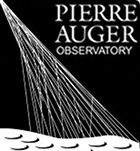

ICRC 2009 (Lodz) Auger Papers
-
Astrophysical Sources of Cosmic Rays and Related Measurements with the Pierre Auger Observatory, including:
- Correlation of the highest energy cosmic rays with nearby extragalactic objects
- Discriminating potential astrophysical sources of the highest energy cosmic rays
- Intrinsic anisotropy of the UHECR
- Ultra-high energy photon studies
- Limits on the flux of diffuse ultra high energy neutrinos
- Search for sidereal modulation of the arrival directions of events
- Cosmic Ray Solar Modulation Studies
- Investigation of the Displacement Angle of the Highest Energy Cosmic Rays Caused by the Galactic Magnetic Field
- Search for coincidences with astrophysical transients
- An alternative method for determining the energy of hybrid events
-
Studies of Cosmic Ray Composition and Air Shower Structure with the Pierre Auger Observatory, including:
- Measurement of the average depth of shower maximum and its fluctuations
- Study of the nuclear mass composition of UHECR with the surface detectors
- Comparison of data from the Pierre Auger Observatory with predictions from air shower simulations: testing models of hadronic interactions
- A Monte Carlo exploration of methods to determine the UHECR composition
- The delay of the start-time measured with the Pierre Auger Observatory for inclined showers and a comparison of its variance with models
- UHE neutrino signatures in the surface detector
- The electromagnetic component of inclined air showers
-
Calibration and Monitoring of the Pierre Auger Observatory, including:
- The monitoring system of the Pierre Auger Observatory and its additional functionalities
- Atmospheric Monitoring and its Use in Air Shower Analysis
- Atmospheric effects on extensive air showers observed with the array of surface detectors
- Nightly Relative Calibration of the Fluorescence Detector
- Rapid monitoring of the atmosphere after the detection of high-energy showers
- Atmospheric Aerosol Measurements
-
Operations and Future Plans of the Pierre Auger Observatory, including:
- Performance and operation of the Surface Detectors
- Extension of the Pierre Auger Observatory using high-elevation fluorescence telescopes (HEAT)
- AMIGA - Auger Muons and Infill for the Ground Array
- Radio detection of Cosmic Rays
- Hardware Developments for the AMIGA enhancement
- A simulation of the fluorescence detectors of the Pierre Auger Observatory using GEANT 4
- Education and Public Outreach
- BATATA: A device to characterize the punch-through observed in underground muon detectors and to operate as a prototype for AMIGA
- Progress with the Northern Part of the Pierre Auger Observatory




